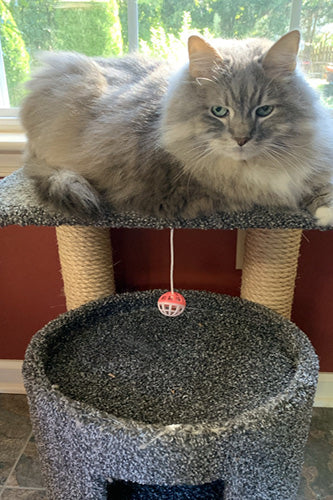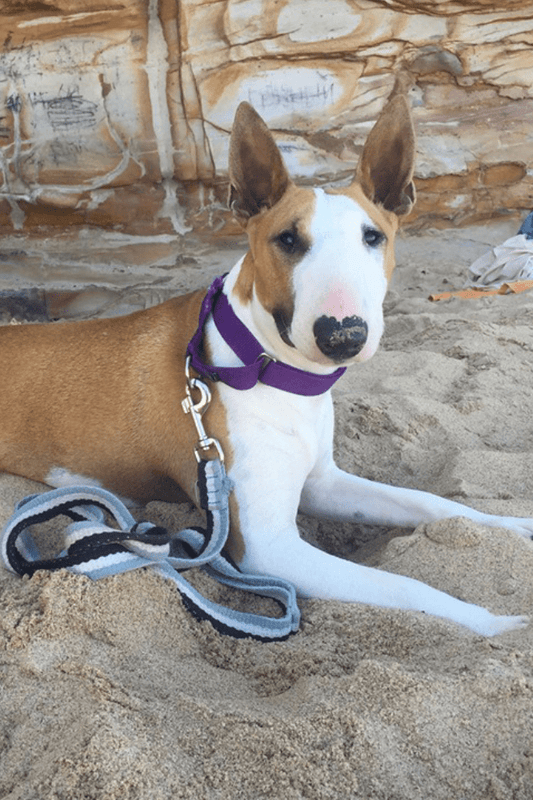At some point in our dog’s life, they are most likely to require some sort of recovery period. Whether this is desexing, to recover from a soft tissue injury or a major operation like a cruciate ligament tear. Whilst these all seem like stressful times, there are strategies you can put in place to ensure that your dog is ready for the inevitable and the recovery process is a smooth one.
One of the biggest hurdles that a lot of pet parents have, is when their vet says the phrase “you have to keep them quiet for two weeks”. What does ‘keep them quiet’ mean? It means:
- No free play or off lead run arounds
- No dog play
- No long walks
- No jumping up on furniture
- No jumping on people
- Resting as much as physically possible on a bed with minimal movement
- Walking on lead for toilet breaks only

For a lot of dogs, this is a huge ask. However, with some basic training, this can be achieved with minimal effort and can really help with a speedy recovery:
Crate Training
For every person that is for crate training, there is a person that is against it. However, crate training is hands down one of the most beneficial life skills for a dog to learn. Here are some useful reasons to crate training a dog:
- For the groomers
- For the vet clinic
- Post-surgery recovery
- During an emergency
- For multi dog house holds
- During transportation
- For resource guarding dogs
- For toilet training a puppy
- For dog sports

The purpose of crate training is to make the crate a valuable, safe place for your dog. Crates are one of the most effective ways to contain your dog and minimise excessive movement during a recovery period.
Where many pet parents go wrong is they introduce a crate or pen at the beginning of the recovery period. This makes the process so much more stressful for the dog. If you choose to go down the crate training path, it is important to start the process before the scheduled procedure.
Susan Garrett is one of the most renowned trainers world-wide for crate training. Her basic course can be found here
Teach Your Dog To Ditch The Bowl
Getting your dog used to the concept of ‘Ditching the bowl’ can be one of the most beneficial strategies to keep your dog’s mind cool, calm and collected. If you are unable to tap into any physical exercise outlets during the recovery period, mentally stimulating your dog will be essential. Ditching the bowl is about using your dog’s daily food allowance and providing more mentally stimulating ways to feed it. The most basic form of mental enrichment is through slow feeder or food puzzles such as Kong toys.

A lot of dogs do not have the confidence and problem-solving skills initially to successfully finish a food puzzle. This is something that you have to help them with and slowly build on difficulty. Introducing these prior to a recovery period can help reduce frustration when your dog has less movement available to them.
Lead Manners Are Invaluable
Something that you may be required to do is to restrict your dog from off lead exercise. This means that the only form of physical exercise is like to be on lead trips to the toilet and progressing to brief walks. Teaching your dog how to behave on lead will not only help with smooth easy trips to the toilet, but reduce the likelihood of injury or strain caused by over arousal at the prospect of going for a walk.
Put ‘Toilet’ On Cue
Another invaluable skill is teaching your dog how to toilet on cue with no fuss. The easiest way to do this is to introduce the cue JUST before your dog toilets and then reward them for complying. Through constant repetition your dog will begin associating the verbal cue with the act of toileting.
Train Your Dog To Accept Manual Handling
This is another super important life skill for all dogs. Manual handling is a part of every dog’s life. Having a dog accept manual handling without being in a stressful state can be useful if you are required to redress wounds, change bandages, put head collars on or off and to check the injury site.
Working on this can be starting with touching a paw with one finger briefly and rewarding with food. This can then progress to more manual handling where the dog is reinforced for showing relaxed compliance.
If your dog is particularly uncomfortable with being handled, it is best to consult with a certified trainer to help you.
These are some basic ways that you can help not only your dog, but also yourself when it comes to dealing with a recovery period. Always be guided by your veterinarian or health professional on what is safe for your dog’s situation.










